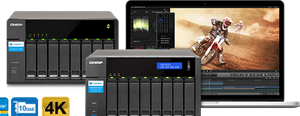USC 76-Node Macintosh Cluster Achieves 233 GigaFlops
Large Macintosh cluster at USC achieves over 1/5 TeraFlop on 152 G4’s and
demonstrates excellent scalability
Los Angeles, California, USA – January 11, 2001 – Researchers and staff at
the University of Southern California (USC) collaborated with scientists
from the University of California, Los Angeles, (UCLA) to achieve a
milestone for cluster computing and the Macintosh platform. Software from
Dauger Research, Inc., and UCLA achieved 233 Gigaflops on a Macintosh
cluster at USC’s Language Arts computer lab and other USC facilities.
The software used to perform this calculation is the latest incarnation of
AppleSeed (http://exodus.physics.ucla.edu/appleseed/), a project begun by a
pair of UCLA physics researchers in 1998. Their software is used world-wide
for easy-to-use and numerically-intensive parallel computing. This is the
first time, however, that it has been run on 76 nodes or has achieved over
1/5 TeraFlop (1 TF = 1000 GF = one trillion floating-point operations per
second).
In addition, no evidence could be found for an intrinsic limit to the size
of a Macintosh cluster, which indicates that Mac clusters have excellent
potential scalability.
The hardware consisted of 56 Power Mac Dual-Processor G4/533’s plus 20
Power Mac Dual-Processor G4/450’s connected via a large 100BaseT switch.
The application run was the AltiVec Fractal Carbon demo, which used
MacMPI_X.c for its message passing. The parallel computing job was launched
using Pooch v1.1.2, and the operating system was Mac OS 9.2.1.
This benchmark was performed in December 2001, while USC was on Christmas
break. Now that USC is back in session, the nodes have returned to work as
a computer lab for their Language Arts department.
Full details are available on the Dauger Research web site at:
(http://daugerresearch.com/fractaldemos/USCCluster/USCMacClusterBenchmark.ht
ml)
Dauger Research, Inc., was incorporated in September 2001 and founded by
Dr. Dean E. Dauger. Dr. Dauger is the award-winning author of Atom in a Box
and Fresnel Diffraction Explorer and has co-authored award-winning
commercial software as early as 1992. After completing his Ph. D. in
physics, he founded Dauger Research, Inc., to bridge the divides between
the scientifically and technically complex and the mainstream by making
high-performance computation and visualization easy to use and accessible
to users.


